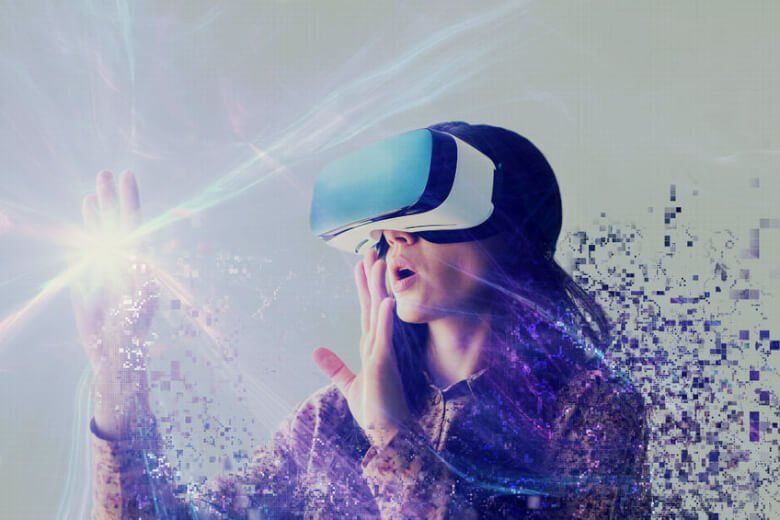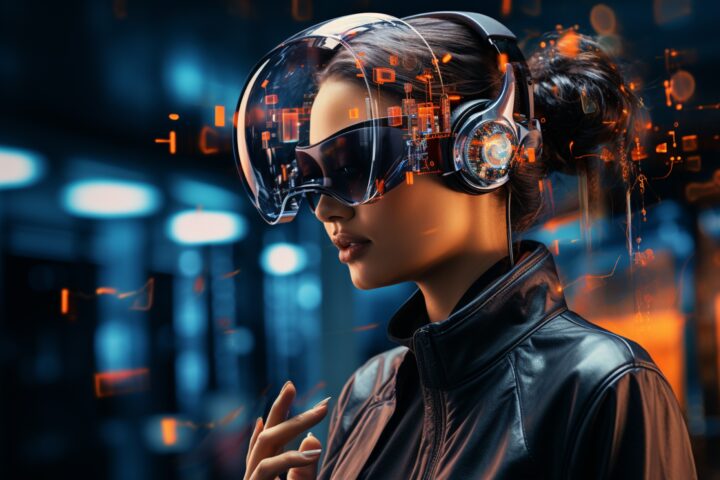
When I think of interactive content, I envision the interactive education programs of the immersive virtual reality, OASIS (the Ontologically Anthropocentric Sensory Immersive Simulation) in Ready Player One. Based on the book, the whole world is in a dire situation in 2045.
To escape the harsh reality, people seek consolation in the virtual world. OASIS is largely a MMOSG (massively multiplayer online simulation game), but it has so many other functions that enable people to learn, shop, travel (teleport to different sectors of the virtual universe), conduct business and interact or fight (like in video games) with others. The OASIS interactive educational programs described in the book can teach children how to walk, talk, add, subtract, read, write and share. Its public library has pretty much all the publications, art, music and other forms of content that have ever been published for people to access and interact with.
In a way, it’s Facebook, Xbox, Amazon, YouTube, Google, Apple and more on steroid in 3D; A fully realized version of ‘Second Life.’ To me, the OASIS represents what content marketing is all about; sharing something useful with your audience and making it fun! Unfortunately, we have not reached the pinnacle of interactive content yet. Most of the content we see today is one dimensional. The interactive content in our world is simply defined as any content that requires participants’ active engagement.
Typical examples: customers enter information or answer questions by completing surveys, responding to quizzes, or engaging with ROI or cost savings calculators. You may have seen interactive and animated home pages, infographics, eBooks, videos and other formats. As long as the content is digital, you can work with your technical teams or agencies to make it a fun and engaging manner.
WHAT IS AR, VR, OR MR?
Let’s quickly define AR, VR, and MR. AR (Augmented Reality) is defined as a live, direct or indirect view of a physical, real-world environment whose elements are augmented (or supplemented) by computer-generated sensory input such as sound, video, graphics or GPS data. The perfect example is Pokémon Go. VR (Virtual Reality) is an immersive multimedia or computer-simulated reality, replicates an environment that simulates a physical presence in places in the real world or an imagined world, allowing the user to interact in that world.
A wonderful real-world example is Google Earth VR, but I prefer the Star Trek Holodeck. Another term, MR (Mixed Reality), is gaining traction. It means placing artificial information and objects positionally and rotationally correct into 3D space in real time. The most recent example is Microsoft’s Hololens technology, check out this great demo. This group of technologies is called xR, or Cross Reality. The xR realm is poised to have a massive impact not only on consumers but also on sales and marketing because it adds an “interactive” element to marketing outreach.
MARKETING: INTERACTIVE CONTENT AS PART OF YOUR MARKETING MIX
With the rise of VR and AR, brands are dipping their toes into the 3D-centric interactive content waters. They are attempting to create a virtual reality experience to let their audiences “feel” or “experience” the products. Since creating VR or AR interaction is not cheap, most of the experiments or early adoptions are done by major brands. IKEA launched an AR mobile app, IKEA Place, in 2017.
You can tap through the app’s catalog of over 2,000 products, then hold up your phone and use the camera to place the digital furniture anywhere in a room. Interested in seeing how a Bjursta dining room set fits into your dining room? Done. Can you really squeeze that 8-foot-long a HÖJET area rug into your room? Point your phone camera at the floor, and watch the rug appear at scale. You can even place a futon where it would go in the guest room. Then see what it looks like when it unfolds into a bed. Many other retailers are experimenting with ways to bring their products to life with similar apps.
Although Uber is now a global brand, they still make an effort to continue to build their brand awareness. At the Zurich Main Station, Uber used AR to transfer their passengers to another world. People had an opportunity to admire the Golden Gate Bridge, pet a tiger in the jungle or jump with kangaroos in Australia
.
Another noteworthy example comes from BMW. They offer virtual test drives with their new i8 and i3 models. Using a mobile app, you can configure your ideal vehicle, then perform a virtual test drive. It’s not 100% xR, but BMW made an effort to create an immersive experience.
How to measure the ROI of xR interactive marketing?
Well, it depends. Overall, any xR effort is not cheap. It usually requires a significant amount of budget to plan and implement. If it’s part of an app, it requires regular maintenance and frequent software updates. Since this is a big-ticket item, it’s important to tie your expenses to sales or agreed-upon success metrics. For IKEA, it’s feasible to correlate the users’ usage with their actual purchases if the app data is integrated with their customer database and point of sales.
For Uber, it’s possible to check if the Uber rides go up during the event and track the number of rides 7-10 days after the events and compare that with the same time last year or last month, then determine if the incremental revenue surpasses the marketing expenses. Since this is a brand-awareness driven marketing effort, it’s also OK just to measure the overall media mentioned and free impressions on social media. For BMW, I can see the app as part of product launch efforts.
It can be used by salespeople in a dealership to showcase the cars. It can also be used by potential customers who are interested in experiencing or discovering more about BMW’s i8 and i3 models. A number of downloads, dealer usage and feedback, media and social media impressions and mentions are good metrics. It may be difficult to tie this app with revenue since most BMW sales are managed by its dealers.
SALES: INTERACTIVE CONTENT AS PART OF SALES ENGAGEMENT
Conventionally, the best way for salespersons to showcase their products is show-and-tell. That’s why events are still effective. Event attendees (prospects) are already on the venue. It’s easier to get their attention, show them your products and follow-up with them after the event. Imagine if you can enhance the attendee experience on the show floor or at your 1:1 meeting. In the BMW example above, salespeople can easily use the app as a conversation starter and demo. Ford has adapted its Microsoft HoloLens to optimize its product design and development. I can easily see this tool being used to gather feedback from its customers. Or to do a virtual product demo by its sales force to their dealers. VR serves as a product development and sales enablement tool.
Here’s another great example from Caterpillar. This company sells large equipment in industries such as mining, construction, energy, and transportation. It’s challenging to bring the physical equipment to a client site for a demo. According to Terri Lewis, digital and technology director: “The company has already created a tractor in a virtual reality app that includes 6,000-part numbers. A salesperson could use an iPhone or iPad to hover over an icon on a specifications sheet to have a virtual rendering of the product pop-up as a visual. The demos may also help salespeople identify potential issues by letting customers experience the products and view the design or specifications in 3D.
How to measure the ROI of xR interactive in sales?
Since the xR content is used by sales teams, it’s a lot easier to measure sales impact. Content downloads and usages, customers’ direct positive feedback, deal opportunities, and deal closures are part of the metrics. Possibilities are endless, yet… We can take even one step further. By using VR technology with large, virtual touch screens to create compelling experiences. Check out the Oculus Dash, taking our interaction with the PC from a limited monitor to something much bigger.
The xR possibilities to enhance customer experience or better our lives are boundless. I love Lowe’s innovation lab. They constantly look ahead to use different technologies to enhance their customers’ experience from AR/VR, and 3D printing to robotics. The lab’s VR initiative, Holoroom, lets you create your own room on a computer. Then, you can use goggles to see your room virtually and change parts as you see fit in real-time.
xR technology continues to evolve as it brings the real world experience into the virtual world. As marketing and sales professionals, it’s time to experiment with the technologies to create unique differentiators for our products and brands.
The book Ready Player One, by Ernest Cline was made into a movie and released in March 2018. Although the movie and the book share the same premise and characters, the movie storyline is significantly different than that of the book. I like the book much better than the movie. Full of 80’s TV series, movie, and video games references, it was a fun read. It may give you some ideas on how to proceed with your VR/AR/MR initiatives.



